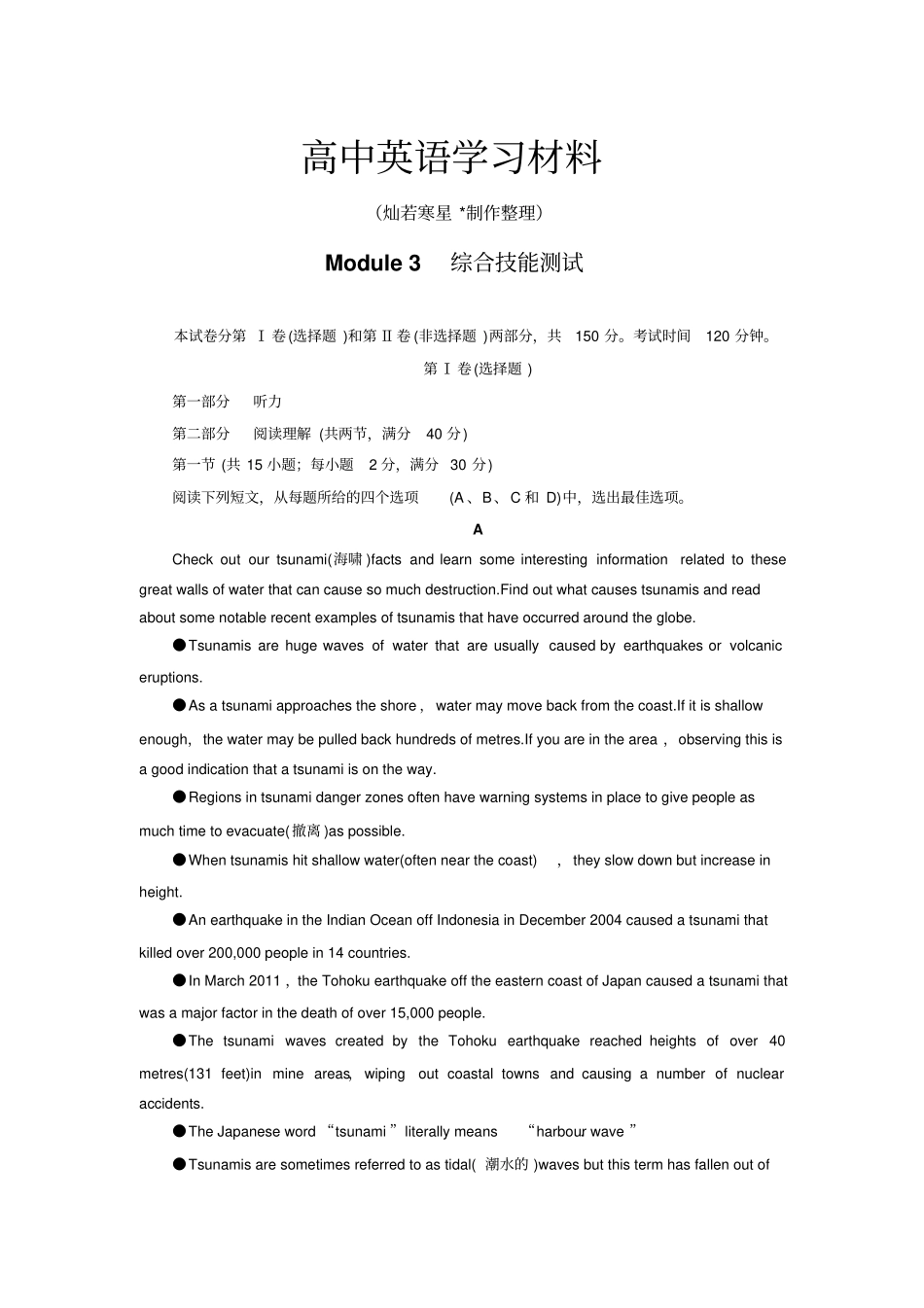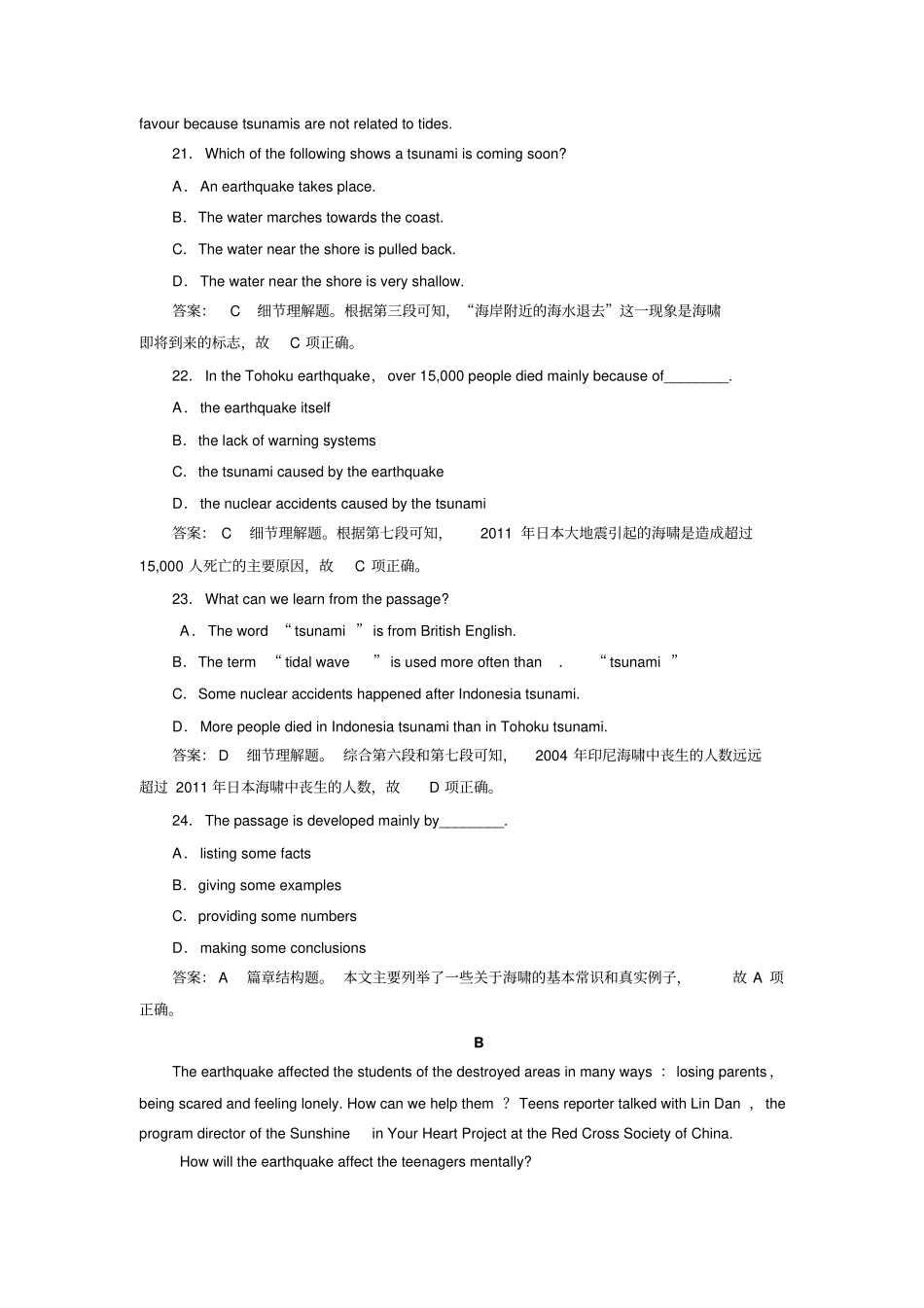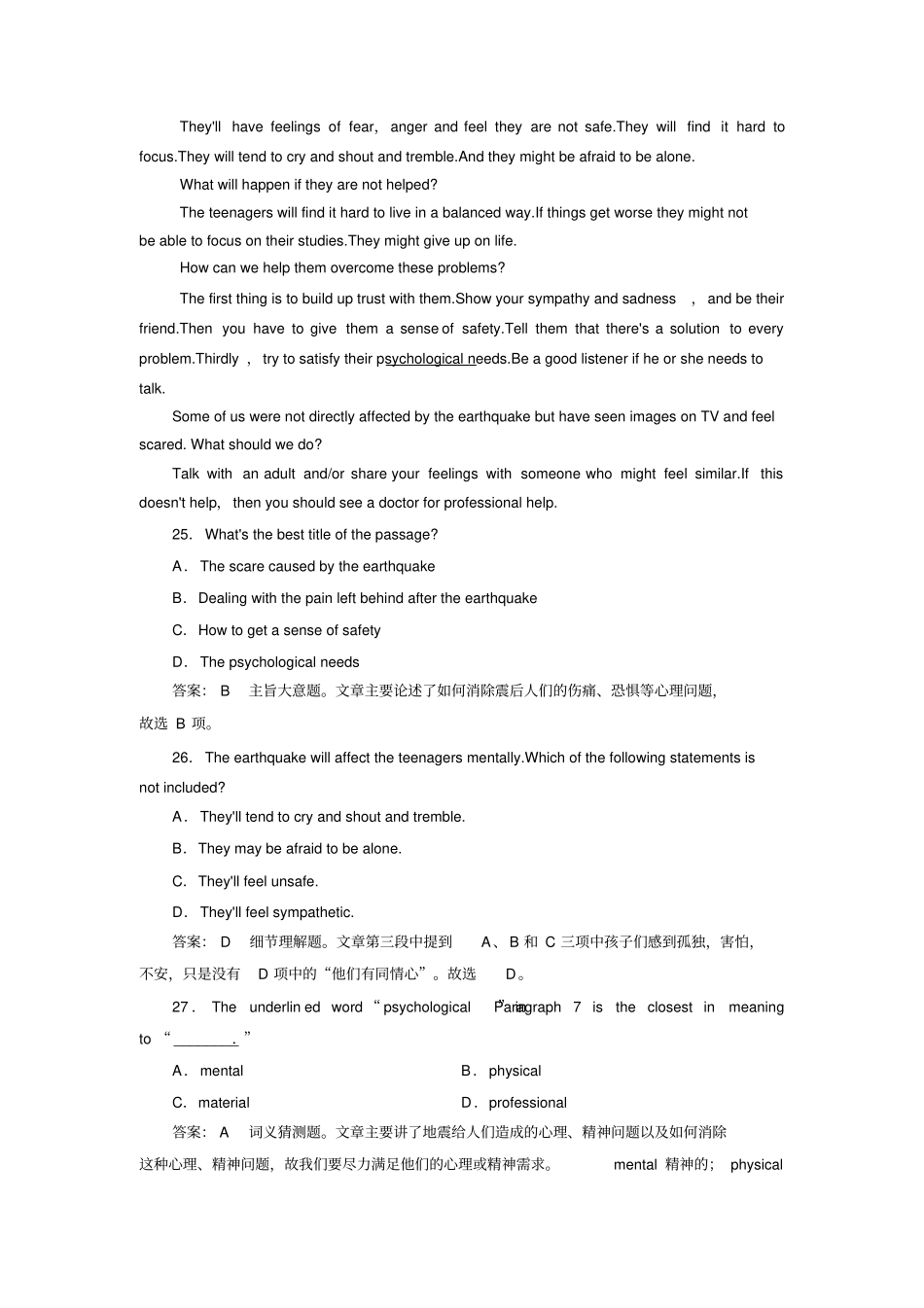高中英语学习材料(灿若寒星 *制作整理)Module 3综合技能测试本试卷分第 Ⅰ 卷(选择题 )和第 Ⅱ卷 (非选择题 )两部分,共150 分。考试时间120 分钟。第Ⅰ 卷(选择题 ) 第一部分听力第二部分阅读理解 (共两节,满分40 分) 第一节 (共 15 小题;每小题2 分,满分 30 分) 阅读下列短文,从每题所给的四个选项(A 、B、C 和 D)中,选出最佳选项。ACheck out our tsunami(海啸 )facts and learn some interesting information related to these great walls of water that can cause so much destruction.Find out what causes tsunamis and read about some notable recent examples of tsunamis that have occurred around the globe. ●Tsunamis are huge waves of water that are usually caused by earthquakes or volcanic eruptions. ●As a tsunami approaches the shore ,water may move back from the coast.If it is shallow enough,the water may be pulled back hundreds of metres.If you are in the area ,observing this is a good indication that a tsunami is on the way. ●Regions in tsunami danger zones often have warning systems in place to give people as much time to evacuate(撤离 )as possible. ●When tsunamis hit shallow water(often near the coast),they slow down but increase in height. ●An earthquake in the Indian Ocean off Indonesia in December 2004 caused a tsunami that killed over 200,000 people in 14 countries. ●In March 2011 ,the Tohoku earthquake off the eastern coast of Japan caused a tsunami that was a major factor in the death of over 15,000 people. ●The tsunami waves created by the Tohoku earthquake reached heights of over 40 metres(131 feet)in mine areas,wiping out coastal towns and causing a number of nuclear accidents. ●The Japanese word “tsunami ”literally means“harbour wave ”.●Tsunamis are sometimes referred to as tidal( 潮水的 )waves but this ...


